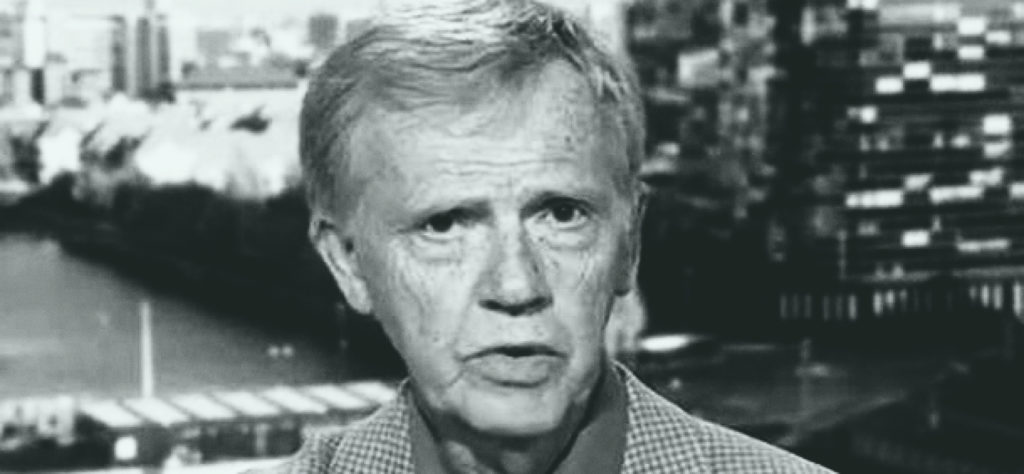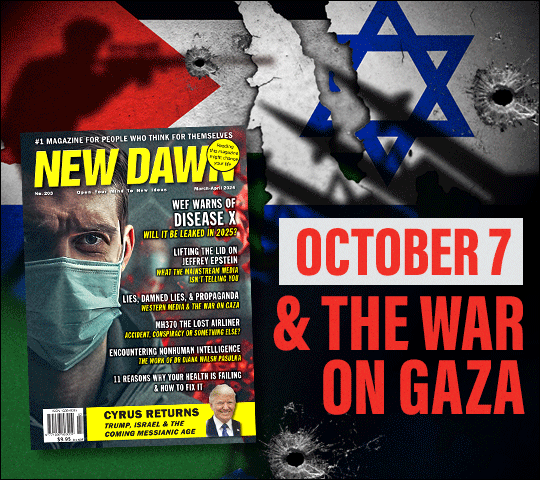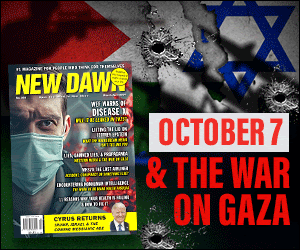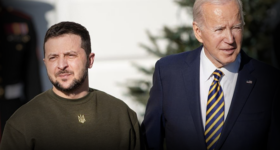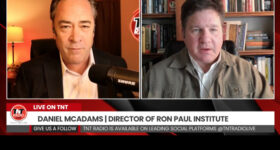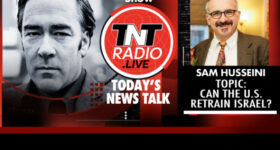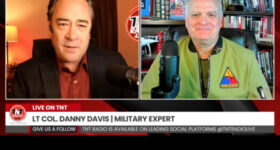Peter Ford, former British Ambassador to Syria 2003 – 2006
With military operations in the South virtually over, attention inevitably turns to the North and specifically to Idlib province, the last major redoubt of the armed opposition to the Syrian government. A number of other challenges, however, lie ahead besides Idlib before the Syrian government can rest easy.
Islamic State
The first of these is unfinished business with what remains of Islamic State in what Syrians call the Badiya, the vast swathes of steppe which span sections of Suweida, Damascus, Homs and Deir Ez Zor provinces. Largely inhabited by Druze, Sweida was witness recently to a series of raids and suicide attacks by Islamic State which left over 200 dead. This caused some bitterness among the Druze who felt they had been left exposed by the Syrian Arab Army (SAA), but the feelings were mutual: the SAA are not enamoured of a Druze minority which has largely stayed aloof from Syria’s conflict and refused to let its sons be conscripted or if conscripted be sent to other battlefields.
Possibly mindful of the need to keep the Druze onside, the SAA, it appears, will now focus on countering IS in the Badiya before any major operations in Idlib. This will not be straightforward as IS has shifted to hit and run tactics and rarely now tries to hold territory. IS also benefits from the existence of the US-controlled Al Tanf enclave near where the borders of Syria, Jordan and Iraq meet. In June UK RAF aircraft bombed and killed pro-government forces which were chasing IS on the fringes of the 55 km radius enclave. The Al Rukban makeshift refugee camp, home to 50,000 people which is within the area imposed by the US as a no go zone for Syrian government forces, is also a sheltered hiding place for IS.
It was Al Rukban which was the object of a recent Russian offer to the US to cooperate on resettling the refugees, along with a proposal to work together on demining in Raqqa. Elements in the US administration hostile to any cooperation with Russia leaked and spun the offer as ‘Russia asks for US funds to rebuild Syria’ and the proposal sank.
Despite these obstacles it is fairly safe to predict that the SAA and its allies will over the next several weeks mop up a number of IS and keep the threat from that quarter largely stifled if not entirely extinguished.
Pacification of the South
There is still consolidation to be done in the South. First, arrangements need to be put in place, with the reassuring participation of Russian military police, to cement the incorporation of thousands of ‘reconciled’ militants, shorn of their heavy weapons, into government military, police and civil defence forces. One of the remarkable features of the government’s recovery of territory over the last three years is how smoothly such arrangements have gone. No area has slid back into anarchy. It has to be borne in mind however that the most irreconcilable elements, the most extreme jihadis, together with their families, have taken the option of being bussed to Idlib. Propagandists for the militants decry as ‘forced displacement’ such an arrangement that others might see as commendably humane and pragmatic.
Secondly it may be some months before the situation in the Golan is fully restored to what it was in 2011 before the conflict began. Russian military police will initially assist UNDOF (UN Disengagement Observer Force) in reestablishing themselves in the buffer zone and provide Israel with some reassurance that forces allied to Iran do not come too close.
For all its harrumphing , however, Israel has been unable to impose its will: Iranian advisers and allied forces have only pulled back to the outskirts of Damascus and according to some reports are still present near the Golan but wearing Syrian uniforms. Israeli demands for a complete withdrawal of Iran and its allies from Syria have been seen for the bluster they always were. Israel may continue to stage token air raids all over Syria targeting the Iranian or Hizbollah presence but an elaborate de facto protocol has been worked out whereby limits have been established on such activity. Iran and Syria have both demonstrated in recent months a capacity to strike deep into Israeli territory if pushed beyond those limits. In practice the Golan, like Southern Lebanon following the 2006 war, is now quiet and likely to remain so, for the same simple reason – a balance of mutual deterrence.
The dire predictions of think tank ‘experts’ who foresaw Israeli and US forces going to war to block the Syrian government’s recovery of the areas bordering Israel and Jordan should be remembered next time when dire predictions are made (indeed are already being made, about Idlib). The thousands who fled their homes in the South and were the object of much trumpeted UN, NGO and Western government and media anguish are now safely returned to their towns and villages, with former militants often policing them.
Idlib
According to the UN Idlib province is home to about 2 million people including several hundred thousand displaced from elsewhere in Syria. (Alison McGovern MP, Co-Chair of the UK Parliamentary self-styled ‘Friends of Syria’, stated with hallmark ignorance and hyperbole on 24 July in Parliament that ‘several million people are in the city of Idlib’, when it is doubtful if Idlib city’s population even amounts to one million. The same MP despite having recently been to the Turkish border and met Syrian doctors appeared not to realise that the shortages of medicines in Idlib have nothing to do with the government of Syria, which has no control over Idlib’s border with Turkey, and everything to do with sanctions on Syria.)
Between 40 and 60 thousand Islamist fighters are reckoned to be corralled in Idlib province, including Jaish Al Islam (Army of Islam) and Ahrar Ash Sham, the largest groups, and 10,000 or so Hayat Tahrir Ash Sham (HTS aka Al Nusra aka Al Qaida) with its offshoots like Hurras Ad Deen (Guards of Religion). A large proportion, especially of HTS, are foreigners, including Chinese Uighurs and Russians from North Caucasus. (In the same debate in Parliament on 24 July no speaker mentioned the existence of a single one of these armed groups, while Sir Alan Duncan representing the government spoke apparently without irony of the ‘forces of evil driving towards Idlib’, forces drawn largely from the Alawite and Christian communities which have suffered more proportionately in the conflict than any other ).
The Kremlin has persuaded the Syrian government to hold off from a full frontal attack pending Turkish efforts to dismantle HTS and its satellites. The Russian plan appears to be that if Turkey delivers on this then a peaceful solution could evolve for the rest akin to the reconciliation arrangements in the South, with the irreconcilables transmogrifying into what would be effectively a Turkish militia policing the northern border for a defined period. This is self-evidently the least deleterious outcome possible for the people of Idlib and the one Western governments should be urging on Turkey but aren’t. Turkey has reportedly been given until mid-September to deliver.
Turkey’s incentive is that it dreads a battle for Idlib which could tip another million refugees into Turkey to add to the three million already there. Given its control of finance and supply routes for all the jihadi groups it is well placed to twist arms. Whether it has the stomach however to confront HTS must be considered doubtful.
At all events it appears to be already a virtually done deal that Russian military police and SAA units will be permitted quite soon a walkover in the area of Jisr Al Shughur, a strategic location close to predominantly Alawite Lattakia province and the large Russian base at Hummaym.
If Turkey fails to deliver then the prospects for avoiding large scale violence are bleak. Mitigating those prospects is the possibility, which did not exist in the South, that fighters can always flee across the border, in this case into Turkey. It is not correct to say, as some NGOs and media are saying, that these fighters, or the civilians of Idlib, have nowhere to go, with the possible exception of foreign fighters who likely would not be allowed into Turkey.
Enter the White Helmets. In the event of major hostilities it is eminently foreseeable that reports will soon erupt in Western media of ‘brave’, ‘neutral’, ‘first responders’ testifying to alleged horrific use of chemical weapons. As with previous alleged incidents in Idlib such as Khan Sheykhoun in 2017, it will not be possible for OPCW inspectors or Western journalists to make site visits to verify these reports.
It is equally easy to predict that Western governments will seize on these reports to unleash heavy missile attacks on Syrian government targets, including a possible attempt to decapitate the government with attacks on presidential offices such as were reportedly planned in April following Douma until General Mattis persuaded Trump that such a large scale offensive would be too risky for US troops in places like Al Tanf exposed to possible retaliation from a government existentially threatened and with nothing to lose. The next time however there may not be an escape ramp. Having sworn after Douma to punish the ‘animal’ Asad more heavily next time, Western governments have painted themselves into a corner. The more Western government attempts to neutralise growing public concern over the credibility of the White Helmets are successful, the more likely it is that the world will see a fresh Syria crisis which will make Douma look paltry.
The Kurds
The Kurds may have a role in the upcoming battle of Idlib. Kurdish leaders, mindful of Trump’s stated wish to withdraw US troops from their area, of US reticence over nation-building , of the threat to them from Turkey, and of the long term unviability of Kurds lording it indefinitely over wide territories comprising already restless Arab populations, have entered recently into negotiations with the Syrian government on bringing the North East (Al Hasakeh province, principally) back into the fold. Part of the reported deal would be that concessions to the Kurds would be easier if the Kurds launched a counter-attack to recover Afrin to distract pro-Turkish forces from Idlib. At all events, it appears that the days of indirect US control over 30% of Syrian territory via the Kurdish-dominated Syrian Democratic Forces (SDF) are numbered.
Raqqa is already emerging as a tar baby for the US. Locals, mainly Arabs, have been complaining about the slowness of demining and restoration of basic services. In nearby Al Tabaqa, Syrian government workers and officials have been invited back to assist in the operation of the important dam on the Euphrates.
Geneva/Astana/Sochi peace negotiations
Desultory negotiations continue in these formats with some incremental progress towards setting up a group to look at a new constitution. UN envoy De Mistura continues to shuttle about maintaining an illusion of meaningful activity, with the Russians also keen to sustain that illusion.
The reality however is that the time for negotiations passed some while ago. The only meaningful negotiations now are between the Syrian government and the Kurds, as explained above, and between the governments of Russia, Turkey, Syria and Iran. The US is hoping to exert leverage via spoiling tactics: propping up the SDF, promoting de facto partition, maintaining Al Tanf, continuing sanctions, blocking international reconstruction assistance, and conducting information warfare. Its physical presence however (about 2,000 troops) is a diminishing asset and in some contingencies a liability. The Russians and the Syrians will feel under little pressure to make concessions to the US or the West generally.
That said, the Russians appear keen to involve at least France and Germany in efforts to facilitate the return of Syrian refugees to the homeland. Again, however, as at every stage in this conflict, there is a risk of Western powers overplaying their hand by conditioning resettlement assistance on political concessions: the Syrian security agencies say openly they would rather have 10 million loyal citizens than 30 million of dubious loyalty.
Western policy
For a policy maker genuinely concerned to shorten the agony of Syria rather than indulge in gesture politics and virtue signalling, or prioritise selfish yet ill-conceived great power interests, the conclusions to draw for policy from the above analysis would seem clear:
- Urge Turkey to dismantle the hardline jihadi groups in Idlib.
- Start preparing opinion and allies not to expect support for another knee jerk military reaction in the event of another alleged chemical weapons attack.
- Stop encouraging a de facto partition of Syria and withdraw now redundant Western forces (the ‘coalition’) in short order.
- Start to engage with the Syrian government on recovery issues: lifting of sanctions, support for refugee return, support for reconstruction.
Should it be objected that this course would amount to abetting Russia and Asad, or leaving the future of Syria to be decided among Russia, Turkey and Asad, it must be asked what splendid results have flowed from Western governments’ policies to date, and what in practical terms are Western governments proposing now which would bring the end of conflict nearer?
Simply calling for negotiations or for freezing the conflict by putting on indefinite hold the removal from the backs of the long suffering people of Idlib of the succubus of vicious Islamist groups is not a responsible or even a moral policy, yet that is what current policy amounts to. And have we so far lost our compass that we consider the removal of Al Qaida from Syria a bad thing if it is delivered by Russia?
***
SUPPORT 21WIRE – SUBSCRIBE & BECOME A MEMBER @ 21WIRE.TV
SEE MORE SYRIA NEWS AT: 21st Century Wire Syria Files



